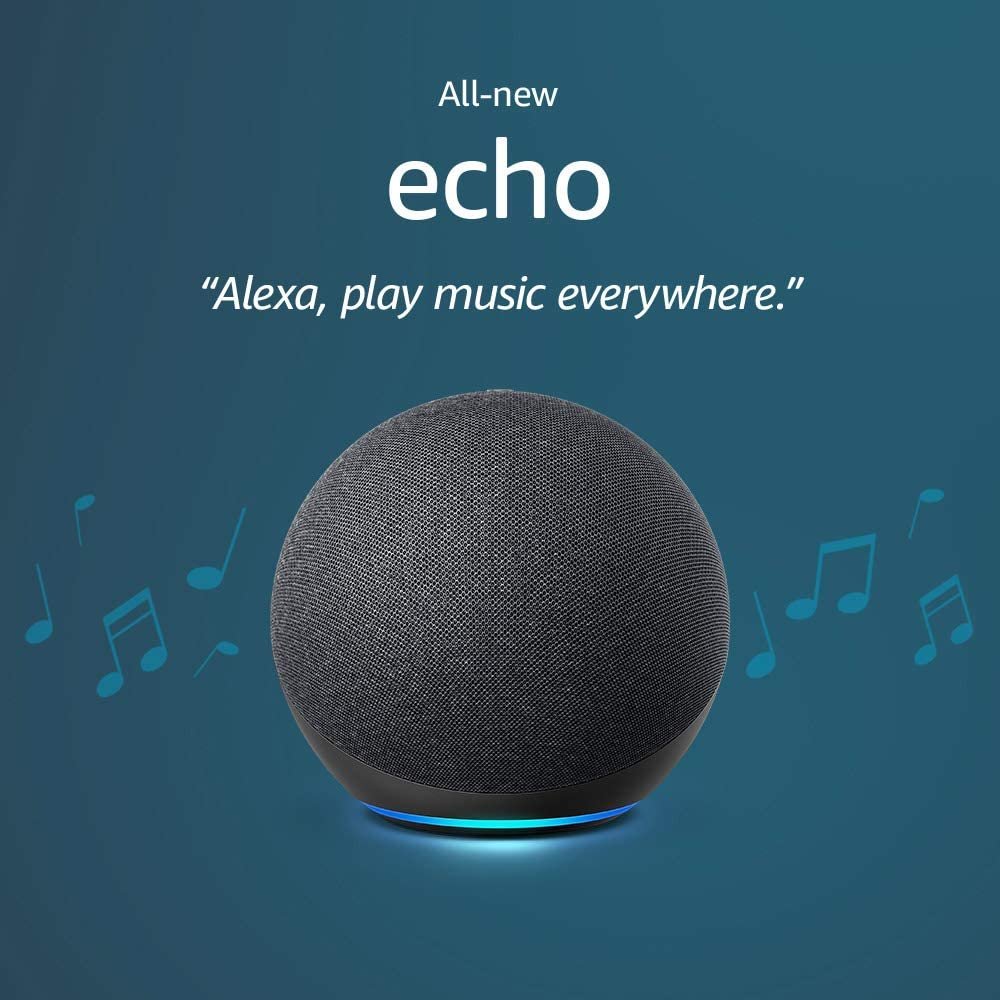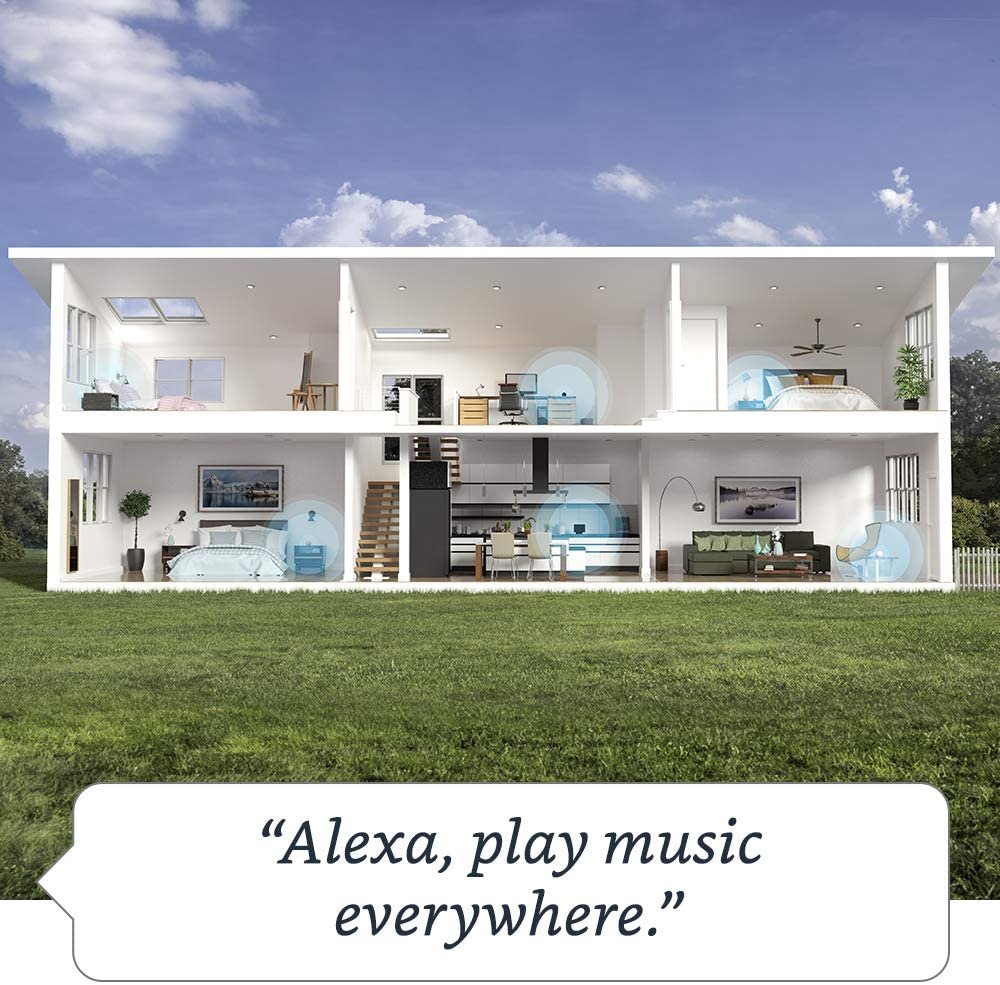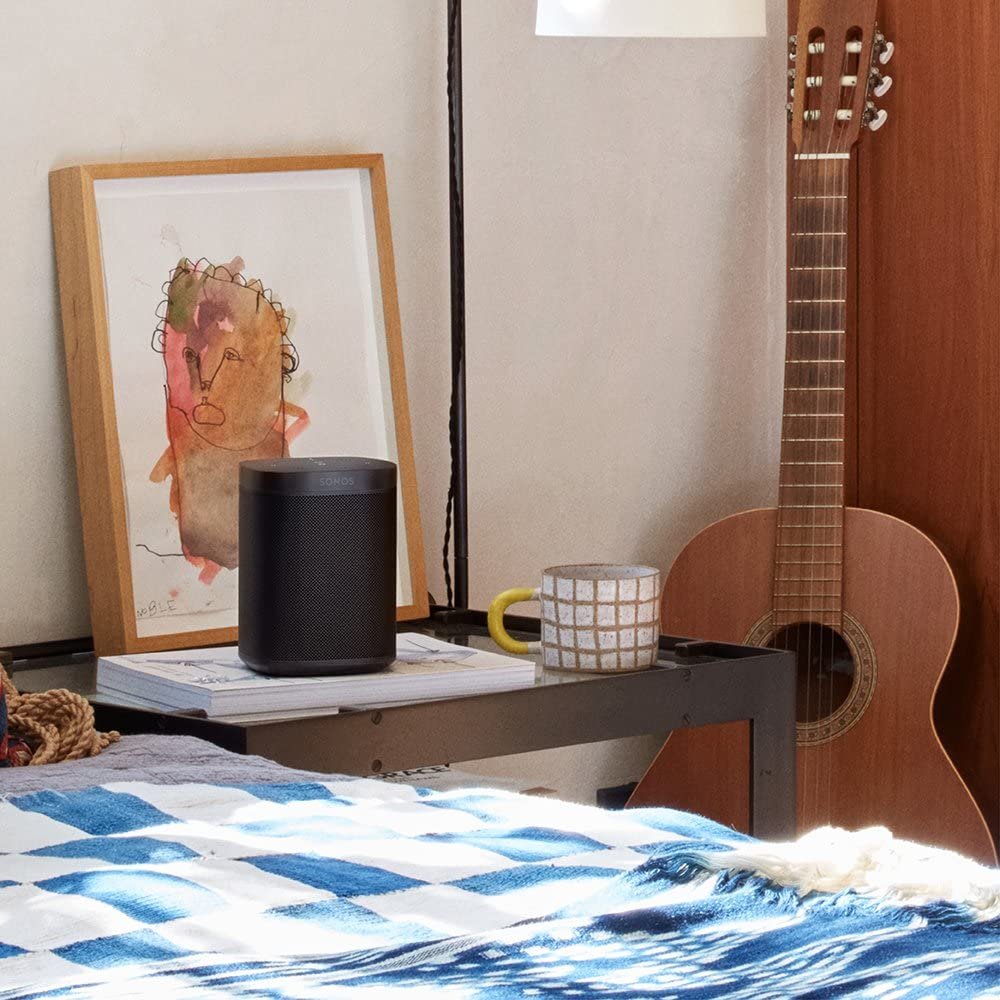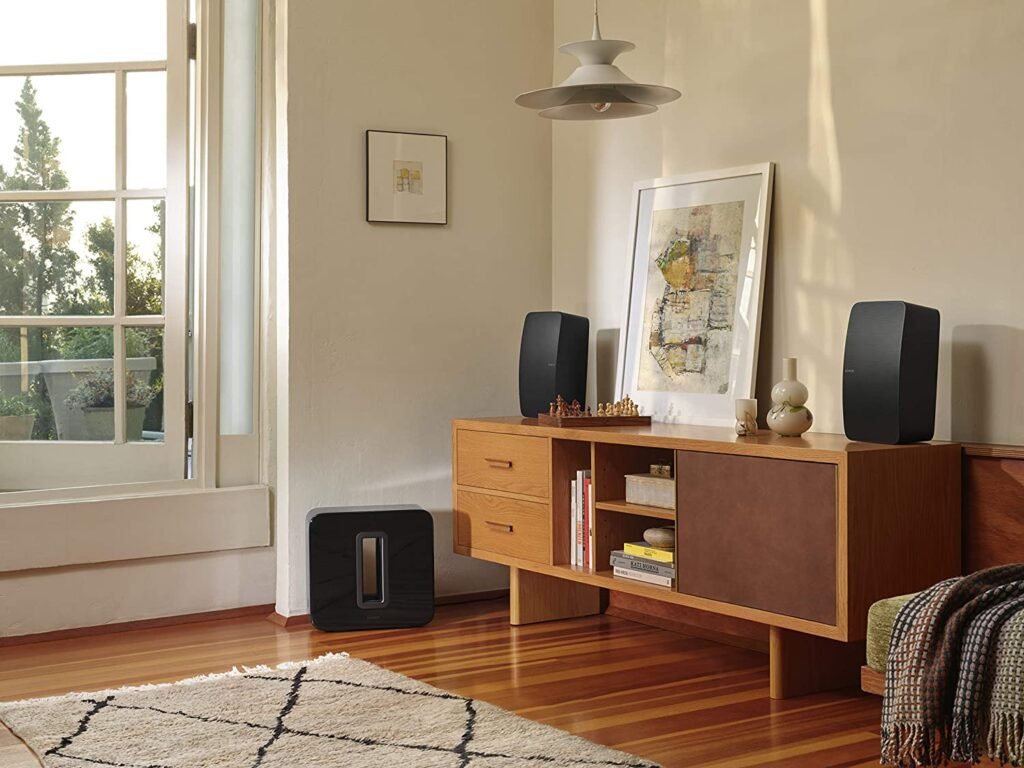Wireless speakers are everywhere these days. And they are easy ways to listen to music, podcasts, and other audio production in more than one room at a time. These smart multiroom wireless speakers also help control smart home devices (like your Smart Thermostats or locks) and even answer our most ordinary, prominent, or confusing questions.
Since there are tons of wireless multiroom speaker system, you need to decide which voice assistant you would prefer.
There is three worth using— Amazon Alexa, Google Assistant, and HomeKit, and each has its ups and downs. Although, we prefer Alexa and Google models, as they are the most widely user-friendly.
However, we think Sonos can get the job done. The speaker sounds exceptional, apps are virtually intuitive, and while it supports the broadest streaming services. The competition is trailing behind, but Sonos One is still the more reliable and complete speaker overall.
What is the best smart wireless multiroom smart speaker for Alexa, Google, and HomeKit?
1. Best overall: Sonos One (Gen 2) Smart Speaker
The Sonos One (Gen 2) is arguably the best buy an all-around smart multiroom wireless speaker. If sound quality, easy setup, and intuitive app operation are your top priorities. This speaker provides all the functionality you’re likely to need across every service you subscribe to: including Spotify, Apple Music, Apple’s AirPlay 2, plus the ability to chat with Amazon Alexa and Google Assistant.
The second-generation is an affordable entry point. It costs less than most high-end wireless speakers, yet its audio performance measures as accurately as speakers costing twice as much. It has a balanced sound and robust profile, and stable multiroom audio but never a boomy bass for a speaker this size.
It’s also one of the best versatile wireless smart speakers to buy if you intend to build a home theater setup. It connects to Sonos Five, which is bigger, better sound for larger rooms, and its TV soundbar.
Pros:
- Reliable, sophisticated sound for its size
- Best of Alexa, Google, and Sonos
- Can plays music while Alexa is muted
- Offers much more streaming services
- It can be used as both stereo and multi-room speakers.
Cons
- Still lacks full control over Alexa.
- Sound can distort at optimum volumes.
2. Premium pick wireless speaker system: Sonos Five
For better sound for larger rooms, the Sonos 5 is an incredible choice. It has a brilliant audio profile with punchy, thumpy bass that’s ideal for a wide variety of useful sound content. Its companion app offers sliders adjustment bass and treble, and it has a fantastic soundstage. But, while it can get loud, there is a great deal of compression at the max volume.
The Sonos Five is the best sounding multiroom wireless speaker system we reviewed. It features a far more straightforward and user-friendly design, making the entire procedure more comfortable to use than ever before. Compared to Bose, it’s just slightly better; both its bass power and overall clarity are superior to those of the Bose. It’s also compatible with Amazon Alexa, Google Assistant devices, and even AirPlay.
Suppose you intend to build a home theater setup. In that case, the wireless Sonos Sub can match any existing Sonos smart speakers to add some oomph. And you can also add Sonos devices to your TV using Sonos Arc or Beam Sound Bar.
Pros:
- Simple setup
- Flexible design
- Offers a lot of streaming services
- Huge, robust sound and easy multi-speaker management
Cons:
- No Bluetooth
- Proprietary system
- No High Res supports
3. The best smart Alexa speaker: Amazon Echo (4th Gen)

Amazon Echo is back with a vastly improved smart speaker, including a built-in Zigbee smart hub, stable sound quality with the New Echo (4th generation). Plus, the indigenous Alexa now allows for a more extensive range of smart home devices. It delivers just as much power as high-end speakers that cost twice as much.
The Amazon Echo (4th Gen) is slightly bigger though the size has made space to gives this Echo a volume boost and enhanced sound stage. You can play music directly from your smartphone via Bluetooth; the quality is suitable for casual listening for small to medium-size rooms. The Echo is simple and easy to use and only requires the Alexa app, which effortlessly assists you through the process.
Things become even better with the Amazon Echo (4th Gen) as it works perfectly with Ring and ADT alarm system. It can also listen for smokes and CO2 detectors and sends an alert on your phone. But you’ve to enabled it through the Alexa app and then armed.
Read our full review of The Best Smoke Alarms of 2020
Pros:
- Quite Affordable
- Strong bass in a classy small design
- Pack with smart features
- Built-in smart home hub
- Integrates easily with top-of-the-line smart home devices.
Cons:
- Slightly bigger than its predecessors
- Echo’s search results and answers aren’t as thorough as Google’s.
4. The best affordable smart Alexa speaker: Amazon Echo Dot (4th Gen)

This option of Amazon Echo Dot (4th Gen) smart speaker is basically just a cheaper Echo, thanks to several small compromises you’re unlikely to notice. It’s a great choice if sound quality is not as important. Still, it is good enough to use as a small kitchen speaker or even a nightstand speaker. It also includes all the standard Alexa features for nearly half the price.
Don’t let the small size of this version fool you because the sound is surprisingly tremendous, and it would satisfy anyone wanting to change a bedside or desk radio. The Dot provides you with all the control and features of Alexa, including a decent speaker for listening to music and alarms.
It doesn’t include a Sidewalk, temperature sensor, the Zigbee smart hub, or mount to a wall or works with any of the third-party accessories made for the earlier version. Nevertheless, the experience is much the same as it still controls all of your other smart devices just as well.
Pros:
- Affordable
- 3.5mm output
- Attractive spherical design
- Alexa Guard protection
- Good standalone speaker for music
Cons:
- Somewhat more immense than the previous model
- Weak bass
5. Best multiroom wireless speaker system: Bose Home Speaker 500
The Bose Home Speaker 500 is a no-nonsense, high-quality wireless multiroom speaker that provides a room-filling wall of sound despite its small size. It’s certainly not cheap, but it does sound much better than the Sonos One, offering a broader soundstage, well-detail, and a powerful bass you can feel. It’s an excellent sounding speaker but more extensive than the Echo, capable of filling a room quite quickly, friendly gathering, or outdoors.
Add in all of the functionality that comes with the hands-free Alexa and Google Assistant. Both allow you to control it by voice. And on the top of the speaker, there are buttons for basic functionality. This includes 6 useful pre-set buttons you can assign to open a specific album or playlist from Amazon Music, Spotify, TuneIn, and Pandora after one touch.
The speaker is really great at picking up voices from the other side of the room to comfortably interact with the speaker from quite far away. But $299 is already more than twice the price of an Echo. But still, if you want a compact speaker that sounds good, we recommend the Sonos One, which costs less.
Pros:
- Sleek design
- Powerful audio quality
- Streams via Bluetooth or Wi-Fi.
- Sensitive microphones
- Alexa built-in and Google Assistant
- Google Cast, AirPlay 2, and 3.5mm jack Aux input
Cons:
- Expensive
- The display looks a little dated.
- Both high- and low-end extensions are lacking.
6. Best midrange speaker with better sound and updated looks for Google Assistant: Nest Audio smart speaker
Suppose you’re interested in an upgrade from the original Google Home. In that case, the Nest Audio Smart Speaker is unquestionably worth a look, especially with its relatively reasonable price. Google is new to smart speakers entirely? For $49, the Nest Mini will get you started for very little money. However, the Nest Audio speaker is an improved version. It sounds a lot better for multiroom and Stereo playback than the old Google Home ever could.
The Nest Audio is larger than the previous model but can easily fit into different places in your home. And more active to respond to voice commands and also connected smart-home devices. Above all, it sounds better; 50 percent stronger bass and 75 percent louder than the existing Google Home speaker.
Compared to Amazon Echo, the Nest Audio is also more clearly define and less muddy, with compelling bass and fullness. But it is the type of bass you hear more than feel. However, it can’t match the design or sound of the Sonos One, which is twice as expensive, meaning that you’re going to have to pay more to get solid sound than the Nest Audio.
Pros:
- Easy to set up
- Quite affordable
- Google Assistant performs better than ever.
- Bold sound with a more compelling bass
- Can pair two together for a better stereo performance
Cons:
- Doesn’t pair with non-Google speakers.
- Not quite as room-filling in the soundstage as Sonos One
7. The best-sounding speaker for room-filling sound: Marshall Stanmore II Wireless Speaker with Alexa
The Stanmore II is a beauty to behold, combining modern Alexa features with the power needed to fill a room with big, bold sound. This multiroom wireless speaker gives overall sound quality than most, although we believe it does not quite live up to its $332 price tag. For a little extra, the Bose Home Speaker 500 sound is a better listening experience.
With its single woofer powered by a 50-watt amplifier and two solid tweeters, the Marshall Stanmore II lived up to its loud and proud guitar amp heritage. It’s awe-inspiring in terms of volume and connectivity with built-in far-field mics that are extremely sensitive. It’s one of the loudest multiroom wireless speakers we’ve reviewed. Plus, it has Google Assistant and Alexa built-in, so you can control its streaming with your voice.
Overall, the Marshall Stanmore II is an attractive looking smart speaker that will fit easily into a guitar lover’s house. However, we weren’t as impressed with the Stanmore II. For $286, we think Marshall Acton II blends into the background and plays a lot loud.
Pros:
- In-App EQ
- Attractive design
- Makes guitars sound great
- Cool physical controls
- Reliable and stable audio and rich bass
Cons:
- Overpriced
- The app is a bit basic
- No battery-powered option
8. Best sounding wireless smart speakers for Apple’s Users: HomePod
Apple’s HomePod is definitely one of the best sounding wireless smart speakers for listening to music. You can control it by voice using the apple voice assistant, Siri. Although we don’t believe it’s the best smart speaker for most people. It only works for people who use iOS devices like the iPad or iPhone and subscribers to Apple Music —don’t buy it if you want to keep streaming Spotify.
As a speaker, the HomePod bass depth is fantastic, and the sound can fill a room, thanks in part to 7-tweeters, each equipped with its own amplifier. While its A8 processing chip can equalize itself depending on the song you’re playing and the room’s ambient conditions. The end result is intense and powerful but balanced sound with no distortion.
The HomePod can’t control as many devices as the other speakers we review, yet it cost $299. Although it’s excellent and does many things right, since it also has an extensive list of flaws, we do not think it is the best speaker for most people.
Pros:
- Elegant design.
- Streaming support via AirPlay
- Easy HomeKit setup and voice control
- Powerful audio quality
- Can adjust audio according to song or room’s acoustics.
Cons:
- Only for Apple fans
- No Bluetooth or Aux jack
- Leaves ring on some wooden furniture.
- Requires iOS 11.2.5 to set up
Buy at Apple.com
How we picked the best wireless multiroom smart speaker
For this guide, we looked at dozen different multiroom wireless smart speaker systems for Amazon Alexa, Google Assistant, and HomeKit. We went through numerous feedbacks, technical specs. Here are the main criteria we focus on for what’s essential in a smart speaker system:
Sound quality: Multiroom wireless smart speaker systems are more common, more comfortable to use than ever, and deliver excellent performance. These speakers can be used merely as speakers. They can also manage multiple speakers and sound at a given time, even if you don’t intend to use voice control all that much. Furthermore, surround sound speakers’ options come with a standard 5.1-channel system that allows you to create a home theater system to watch movies.
Support for the broadest selection of music streaming services:
No matter how great a speaker sounds, if you can’t play music across every service you subscribe to, the speaker is no good. The Sonos One provides all the online streaming music services you’re likely to subscribe to.
How easy it is to control via apps or voice control:
Obviously, sound quality will play a significant role. Still, we consider how easy it’s to use and control these speakers even without taking out your phone. Having a model that understands natural language voice commands, performing tasks, and lets you control it from anywhere in the home is more useful.
Ability to add more speakers together:
Suppose you intend to build a home theater surround setup. The speaker should easily be combined with the existing system to add more listening experience or even let you connect 2 HomePod to Apple TV for stereo sound. Additionally, having the ability to add yet another speaker from another retailer into your existing system is a more straightforward solution.
Discover all the best devices for smart home here!






